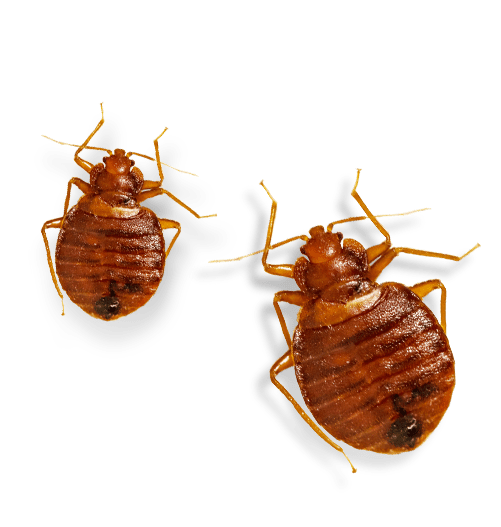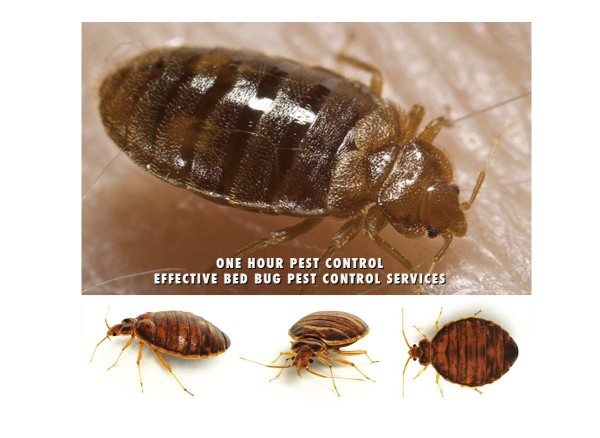Obtain Informed Concerning the Kinds Of Pest Control Techniques and Their Advantages for Homeowners
Understanding the various pest control methods available to property owners is important for effective pest monitoring. From chemical and organic approaches to social and mechanical techniques, each approach offers one-of-a-kind advantages that can substantially influence both wellness and ecological security. Property owners who are educated can make calculated choices that not only address pest issues but additionally improve the overall top quality of their living atmosphere. As we discover these methods better, it comes to be clear that the decision-making procedure includes greater than just prompt results; it touches on long-lasting sustainability and well-being. What variables should affect these essential choices?
Chemical Bug Control Approaches
Chemical insect control techniques are a critical element of incorporated pest administration methods for homeowners seeking efficient remedies to pest infestations. These techniques entail the application of chemical substances developed to remove or hinder pests that threaten personal effects, health, and comfort. Common chemicals utilized include insecticides, fungicides, rodenticides, and herbicides, each customized to target details parasites.
The key benefit of chemical parasite control is its quick performance; several solutions give prompt outcomes, minimizing pest populaces dramatically quickly. In addition, breakthroughs in chemical formulas have resulted in products that are more eco-friendly and have lower toxicity degrees for non-target microorganisms when used correctly.

Organic Parasite Control Techniques
Natural bug control approaches have actually gained importance as house owners look for more secure and more sustainable options to standard chemical strategies. Organic pest control techniques utilize natural predators, parasites, or microorganisms to handle parasite populaces properly. This approach is not just environmentally friendly but also minimizes the risk of harm to non-target species, including useful bugs and wildlife.
One of the most common biological control methods involves introducing natural killers right into the environment. Ladybugs can be utilized to manage aphid populaces, while nematodes target soil-dwelling pests like grubs. Furthermore, parasitoids-- organisms that live on or within a host-- can be utilized to control specific insect varieties by laying eggs inside them, ultimately leading to their demise.
One more method is using biopesticides, which are stemmed from all-natural products such as bacteria, plants, or minerals (bed bug exterminator). These products can properly target insects while positioning minimal threat to animals and humans. Generally, biological parasite control strategies offer property owners with an effective means of insect management that lines up with eco-friendly principles, promoting a healthier living setting while minimizing dependence on synthetic chemicals
Mechanical Bug Control Strategies
Mechanical bug control approaches encompass a variety of approaches that physically prevent or remove bugs without using chemicals. These techniques are particularly useful for homeowners looking for ecologically friendly options while guaranteeing the security of their home.
One typical method is making use of obstacles, such as traps, internet, and displays, which protect against parasites from getting in homes or certain areas. For example, installing window displays can efficiently maintain pests out, while using physical obstacles around yards can prevent larger parasites like rabbits or deer. Furthermore, mechanical catches created for rodents can catch and remove these insects without the demand for harmful materials.
An additional reliable approach includes making use of vacuum cleaners and mops to remove pests straight from surface areas. Normal pest control methods cleansing and maintenance can dramatically lower pest populaces by eliminating food sources and hiding areas. Using devices like ultrasonic pest repellents can discourage various pests with noise waves that are unpleasant to them but inaudible to humans.
Social Bug Control Practices
Cultural bug control methods focus on changing the environment and management techniques to develop problems that are less conducive to pest problems. These methods are essential in preserving a balanced environment and minimizing the reliance on chemical interventions. By changing agricultural techniques, home owners can effectively hinder bugs while advertising plant wellness.
One usual strategy includes plant rotation, which disrupts the life cycles of insects by transforming the kinds of plants expanded in a certain area (bed bug exterminator). This not only lessens pest populaces however likewise enhances dirt wellness. Additionally, intercropping-- growing varied plants in closeness-- can confuse bugs and minimize their ability to situate their preferred host plants
Water administration is an additional important aspect of cultural techniques. Proper irrigation strategies can prevent standing water, which acts as a breeding place for mosquitoes and other bugs. Keeping sanitation in and around the home, such as routinely eliminating particles and food waste, can dramatically reduce insect tourist attraction.
Integrating these social techniques right into a comprehensive pest administration method enables house owners to develop a setting that normally hinders pests, thereby enhancing the effectiveness of other control methods while promoting sustainable gardening and landscape design.

Integrated Bug Administration Approaches
Integrated Insect Management (IPM) stands for an alternative approach that incorporates different techniques to effectively handle insect populaces while lessening environmental influence. This approach incorporates biological, social, physical, and chemical methods to achieve lasting pest control. By examining pest populations and their all-natural enemies, IPM stresses tracking and recognizing insects prior to executing control actions.
One of the core concepts of IPM is making use of limits, which establish the degree of insect task that requires treatment. This ensures that therapies are applied only when essential, minimizing the dependence on chemical the original source pesticides. Biological control techniques, such as presenting natural killers or parasites, operate in combination with cultural methods like plant rotation and environment adjustment to disrupt pest life cycles.
In addition, IPM encourages the usage of least-toxic chemical alternatives when intervention is required, focusing on items that pose very little danger to non-target microorganisms and the environment. For property owners, taking on IPM comes close to not only enhances the effectiveness of parasite monitoring but likewise promotes a much healthier living setting, cultivating biodiversity and reducing chemical exposure. Eventually, IPM equips home owners to make enlightened decisions that balance insect control with link environmental obligation.
Conclusion
In verdict, comprehending the numerous bug control methods equips property owners to make enlightened decisions relating to pest management. Each technique-- chemical, biological, mechanical, cultural, and incorporated insect monitoring-- provides distinctive benefits that provide to various needs and choices.
Understanding the different bug control approaches available to house owners is important for efficient parasite management.Chemical bug control approaches are a vital part of incorporated pest administration methods for homeowners seeking efficient remedies to pest problems. In general, biological bug control methods give homeowners with an effective ways of bug monitoring that straightens with ecological principles, promoting a healthier living environment while minimizing dependence on artificial chemicals.
Social bug control techniques concentrate on changing the setting and monitoring techniques to develop problems that are much less helpful to pest problems.In verdict, recognizing the numerous parasite control approaches encourages home owners to make enlightened choices relating to pest administration.